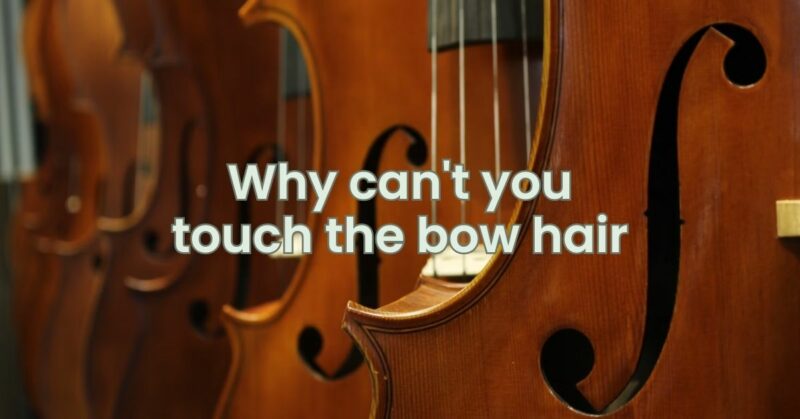The world of violin playing is filled with delicate nuances, and one such nuance involves the careful handling of the instrument’s components. Among these, violin bow hair holds a unique significance. Many musicians are often advised to avoid touching the bow hair, but the reasons behind this guidance might not be immediately apparent. In this article, we’ll uncover the rationale behind why you shouldn’t touch violin bow hair and the impact it can have on your playing experience.
Preserving the Bow Hair’s Integrity
- Oil and Dirt Transfer: Our skin produces natural oils that can transfer onto the bow hair upon touch. Even seemingly clean hands carry traces of oil and dirt. When these substances come into contact with the bow hair, they can affect its texture and grip, ultimately impacting the quality of sound produced.
- Texture Alteration: The natural texture of horsehair contributes to its ability to grip the violin strings effectively. Touching the bow hair can change this texture and reduce its capacity to create the desired friction between the hair and the strings.
- Oxidation and Corrosion: The salts and oils present in our skin can lead to oxidation and corrosion of the bow hair over time. This can cause the hair to become brittle and weak, leading to breakage.
- Inconsistent Rosin Application: Rosin is applied to the bow hair to enhance its grip on the strings and produce sound. Touching the bow hair can cause inconsistent rosin application, leading to uneven sound production.
Preserving the Playing Experience
- Sound Quality: The grip and condition of the bow hair play a significant role in producing the desired tone and sound quality. Touching the bow hair can compromise its ability to interact optimally with the strings, resulting in subpar sound.
- Performance Control: Maintaining consistent grip and control over the bow is crucial for executing different playing techniques. Bow hair that has been touched may not respond as expected, making it difficult to achieve the intended musical expression.
- Longevity: By refraining from touching the bow hair, you contribute to its longevity. Proper care ensures that the hair remains in good condition, allowing you to enjoy its full potential for a more extended period.
Best Practices for Bow Hair Care
- Avoid Touching: Whenever you handle your bow, make a conscious effort not to touch the hair. Focus on holding the bow by its designated areas, such as the frog and the stick.
- Wash Hands: Before playing, wash your hands thoroughly to remove any oils, dirt, or residue that could transfer to the bow hair.
- Hand Cream and Lotion: If you use hand creams or lotions, ensure that they have been fully absorbed into your skin before handling the bow.
- Consult Professionals: If you suspect that the bow hair needs attention or replacement, consult a professional luthier or bow technician who can provide expert guidance.
Conclusion
Respecting the delicacy of the violin and its components, including the bow hair, is an integral part of maintaining the instrument’s sound quality and longevity. The practice of not touching the bow hair might seem meticulous, but it ultimately contributes to the preservation of its unique properties. By adopting proper care practices and adhering to the guidance of professionals, you ensure that your violin bow remains a faithful companion in producing exquisite music for years to come.


